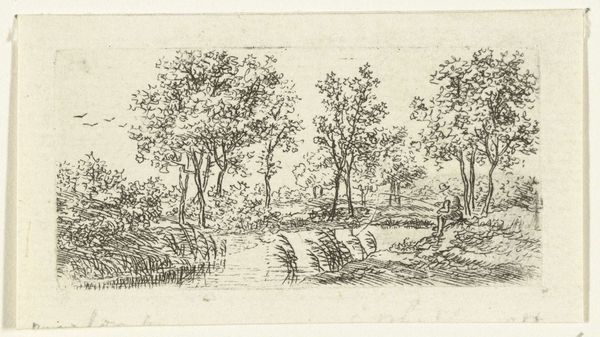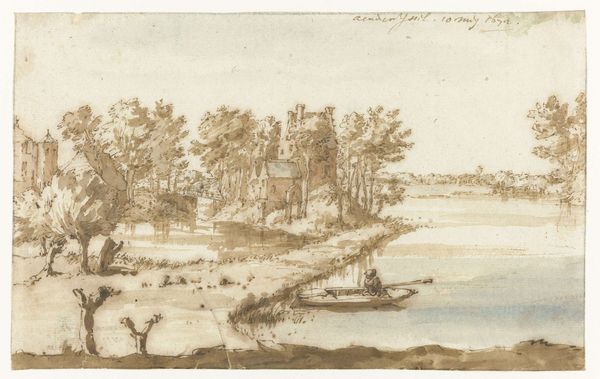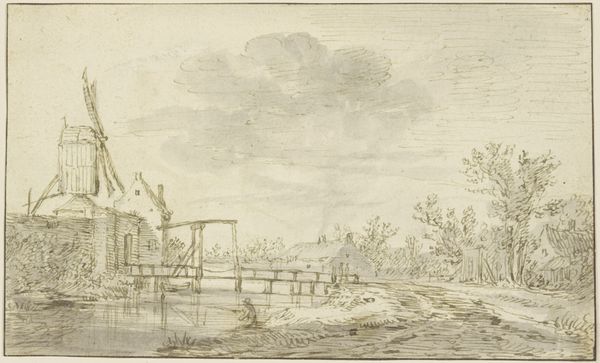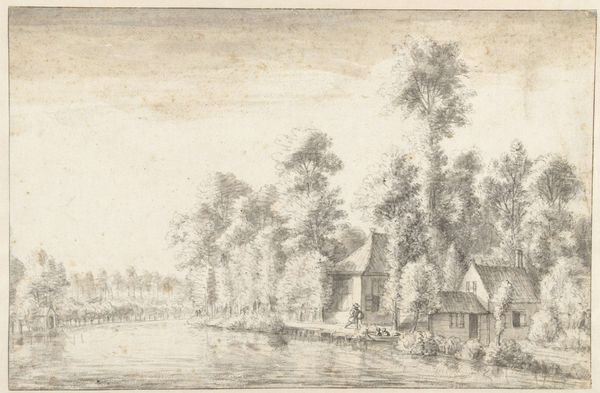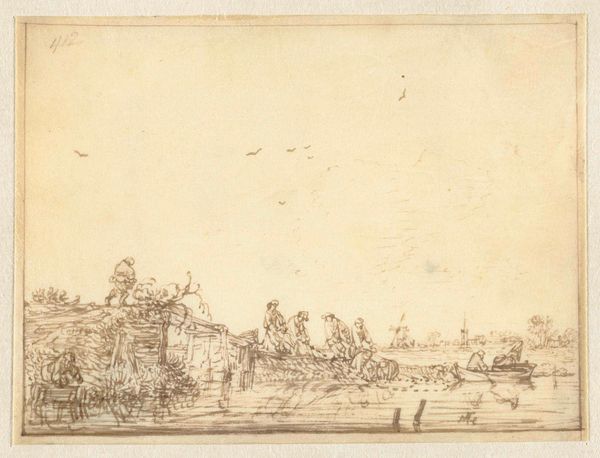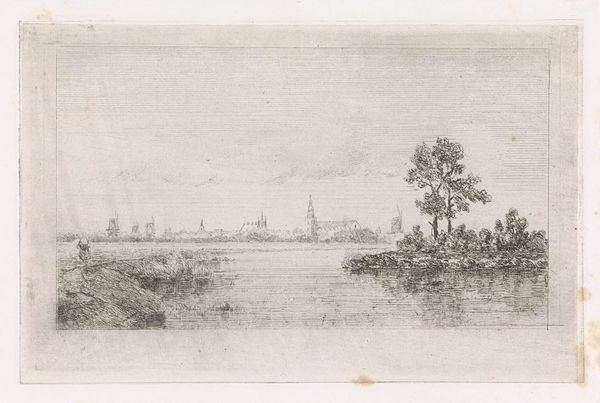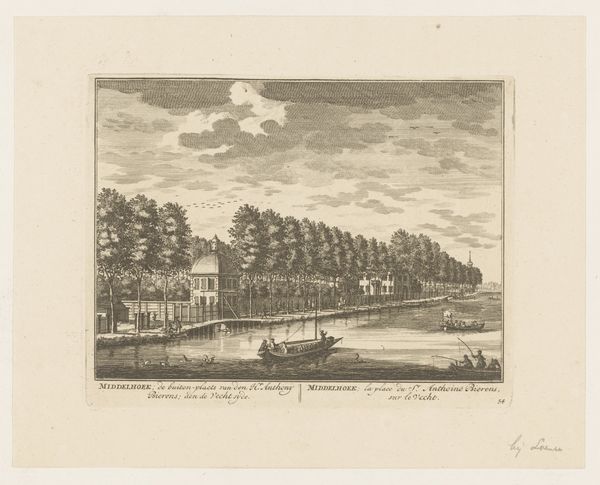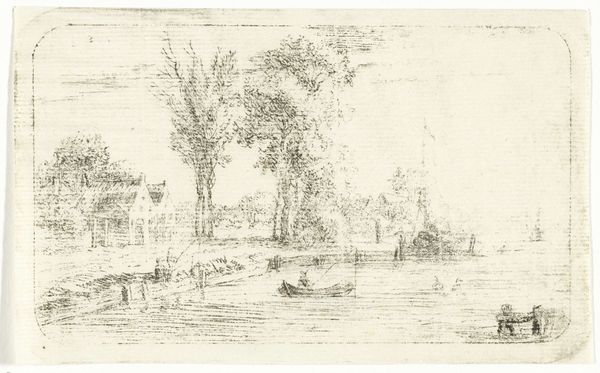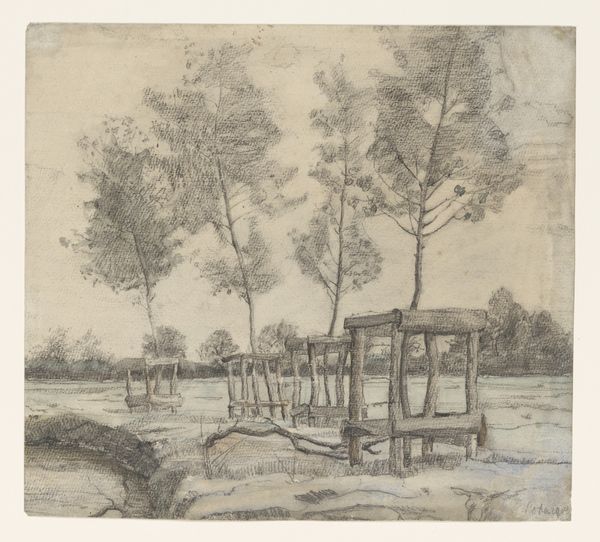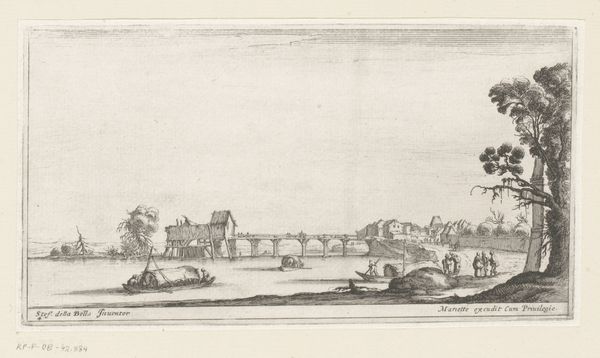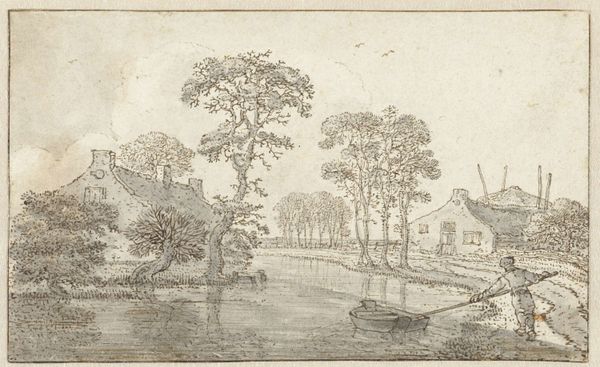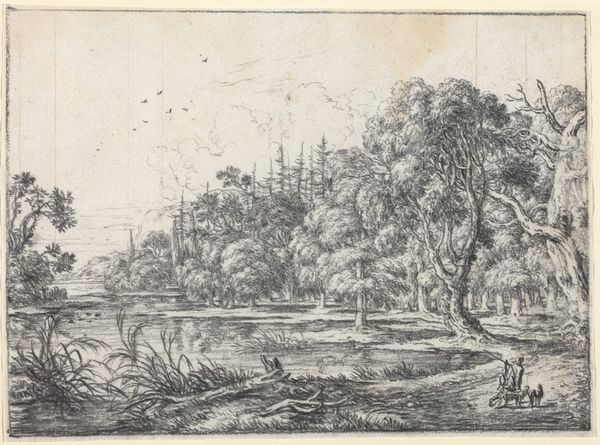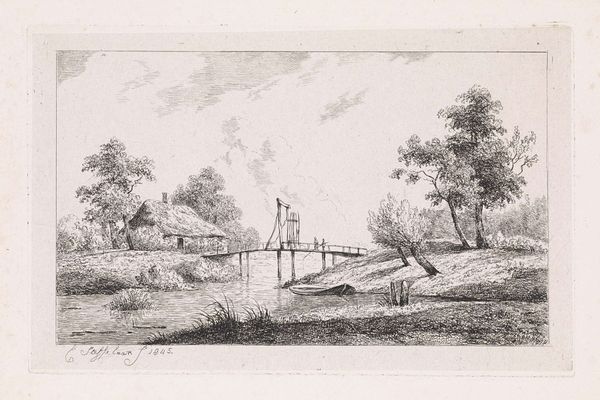
drawing, paper, pencil, pen
#
landscape illustration sketch
#
drawing
#
dutch-golden-age
#
pen illustration
#
pen sketch
#
landscape
#
paper
#
personal sketchbook
#
sketchwork
#
pen-ink sketch
#
pencil
#
pen work
#
sketchbook drawing
#
pen
#
storyboard and sketchbook work
#
sketchbook art
Dimensions: height 154 mm, width 201 mm
Copyright: Rijks Museum: Open Domain
Curator: Before us, we have a 17th-century work titled "Landschap in de omgeving van Haarlem," meaning Landscape in the surroundings of Haarlem. It’s rendered in pen, pencil, and ink on paper. Editor: My first impression is of tranquility—a quiet Dutch scene, sketched with delicate lines. The restrained use of shading creates a somewhat dreamlike quality. Curator: That tranquility resonates, especially when considering the symbolism of the Dutch Golden Age landscape. This landscape wasn't just a depiction of nature; it was deeply tied to Dutch identity and prosperity, referencing the hard work put into managing and living on land reclaimed from the sea. The distant windmill serves as such a prominent, and iconic, emblem of the era. Editor: Yes, and if we focus on that linear perspective, the strategic placement of that windmill against the distant horizon enhances that impression of expansive land. The linear, methodical nature of the sketchwork too emphasizes control and a structural appreciation for what lies ahead. Curator: Exactly. It echoes the themes of order and human intervention into the landscape that were fundamental to the Dutch consciousness. Note how that stream in the foreground, and that single swimming mammal, offers a small gesture to wildness against all those carefully-rendered straight lines! I would guess the patron commissioning this art sought images affirming that control of nature in their environment. Editor: Certainly! The piece balances raw observation with calculated execution. That pen work, with its fine lines and delicate hatchings, establishes a very subtle contrast to the broader strokes of the pencil and lends structure to the pastoral image. Curator: These pastoral scenes served as both celebration and aspiration. Beyond aesthetic appreciation, art of this period captured values linked to notions of freedom, civic duty, and material comfort. Editor: A captivating work, one that reminds us how the artistic landscape is built upon both observation and philosophy. The anonymous hand only deepens its significance. Curator: Precisely. These small glimpses reveal that wider narrative around self-definition. Thank you for sharing your perspective.
Comments
No comments
Be the first to comment and join the conversation on the ultimate creative platform.
